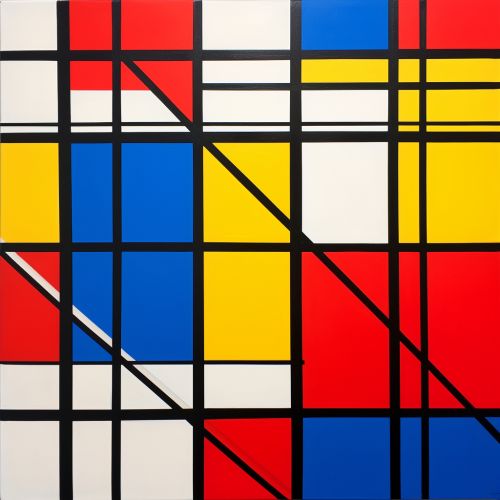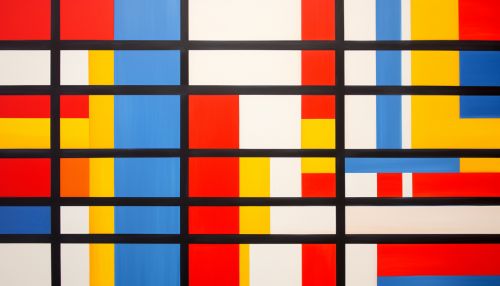De Stijl
Origins and Influences
De Stijl, also known as Neoplasticism, was a Dutch art movement that emerged in the early 20th century. The movement was founded by Theo van Doesburg in 1917 and was characterized by a preference for a minimalistic aesthetic, using only primary colors, along with black and white, and a grid-based composition. The movement was influenced by the Cubist art movement and the philosophical ideas of mathematician and philosopher Gottfried Leibniz and philosopher Baruch Spinoza.


Philosophy and Aesthetics
The philosophy of De Stijl was rooted in the desire for a universal language of art. The movement's proponents believed that art should reflect the underlying spiritual harmony of the universe. They sought to express this harmony through the use of simple geometric forms and primary colors. The movement's aesthetic was characterized by the use of vertical and horizontal lines, and the use of primary colors, along with black, white, and grays.
Key Figures
The key figures of the De Stijl movement included Theo van Doesburg, Piet Mondrian, and Gerrit Rietveld. Mondrian's paintings, with their rigid grid format and primary colors, are perhaps the most recognizable works of the movement. Rietveld, an architect and furniture designer, applied the principles of De Stijl to three-dimensional space, most notably in his Rietveld Schröder House and Red and Blue Chair.
Impact and Legacy
The impact of De Stijl can be seen in the development of the Bauhaus school and the International Style in architecture. The movement's influence extended beyond visual art and architecture to influence graphic design, interior design, and fashion. Despite its short lifespan (the movement dissolved in 1931), De Stijl has had a lasting impact on the development of modern art and design.
